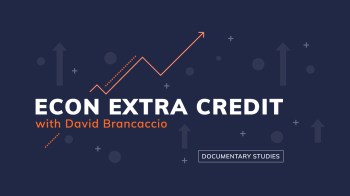Blame the accountants. At least, that’s what we’re being told. If only the green eyeshade brigade didn’t require mark-to-market accounting there would be no financial crisis.
Brian Wesbury, chief economist at First Trust Portfolios L.P. captures the basic complaint about mark-to-market accounting on the opinion page of today’s Wall Street Journal.
…Financial problems have not yet dragged down the economy, but it is also true that the economy is not the cause of financial-market problems. Most of the loans that have been going bad in recent months would have gone bad even if the economy had been growing twice as fast. So what is to blame for the “worst financial crisis since the Great Depression”?
The answer seems simple. Mark-to-market accounting rules have turned a large problem into a humongous one. A vast majority of mortgages, corporate bonds, and structured debts are still performing. But because the market is frozen, the prices of these assets have fallen below their true value. Firms that are otherwise solvent must price assets to fire-sale values. Not only does this make them ripe for forced liquidation, but it chases away capital and leads to a further decline in asset values….
Newt Gingrich agrees.
But I’m with .JPMorgan Chase & Co analyst Dane Mott who was recently quoted in a Bloomberg newswire story, that “blaming fair-value accounting for the credit crisis is a lot like going to a doctor for a diagnosis and then blaming him for telling you that you are sick.”
The best explanation of mark-to-market accounting I’ve read–and why the growing chorus of criticism is deeply flawed–is by Nicole Gelinas, a City Journal contributing editor and the Searle Freedom Trust Fellow at the Manhattan Institute. He’s also Chartered Financial Analyst. You can read the whole article here.
You may ask: What the heck is “mark-to-market” accounting? The people who write and enforce our national accounting standards mandate that publicly traded financial companies must report some of their assets (things like mortgage-backed securities) and liabilities (like money they’ve borrowed from other institutions) at “marked-to-market” values. That is, if you bought a certain security at $100 last year, but you can’t find anyone to buy it this year for more than $40, you’ve got to report its worth as $40, since, unless you plan to build a time machine, that’s the “fair-value market price” it would command.
Contrary to popular belief, mark-to-market accounting isn’t new. Financial institutions have reported many financial instruments this way for decades, usually because they wanted to. Their desire makes intuitive sense. If much of your business is borrowing huge amounts of money and then buying and selling securities to exploit and magnify small price changes in those securities, then you’ve got to have a way of telling the world how much money you’ve made this quarter doing just that. Informing your investors that Joe’s mortgage is still worth the same $250,000 it was 10 years ago (when somebody else lent him the money), minus Joe’s previous payments, doesn’t advance that goal. But telling them that you made $50 million on Joe’s mortgage and thousands of others like it this month by exploiting small changes in interest-rate expectations does.
He gives several reasons why the balme-mark-to-market-crowd is exaggerating the impact of the accounting rule. Take AIG, for example:
Finally, even if standard bearers and regulators suspended fair-market rules today, banks would still be wedded to fair-market principles, at least until all of today’s complex securities are unwound. Consider credit-derivative securities, a form of insurance against debt default. AIG, which holds half a trillion dollars in such obligations, would have gone bankrupt last week without government help. But AIG’s problem wasn’t some accounting rules. Even without them, AIG’s trading partners would have demanded higher cash collateral from the firm as ratings agencies downgraded the firm, due in part to their own private assessment of the chance that AIG would actually have to pay out on those claims. The same was true at firm after firm: risks increased and counterparties demanded more cash, as called for in private contracts. Changing the accounting rules midstream can’t change that.
In the end, the only thing that was wrong with “fair value” accounting was that it was a mirror of the modern financial industry. Financial institutions thought that they could trade anything, anywhere, at any time, safely and virtually risk-free and for an instant profit. It turns out that they couldn’t. Fair value’s sin was in exposing that failure spectacularly.
There is no easy magic wand way out of this mess.
There’s a lot happening in the world. Through it all, Marketplace is here for you.
You rely on Marketplace to break down the world’s events and tell you how it affects you in a fact-based, approachable way. We rely on your financial support to keep making that possible.
Your donation today powers the independent journalism that you rely on. For just $5/month, you can help sustain Marketplace so we can keep reporting on the things that matter to you.


















